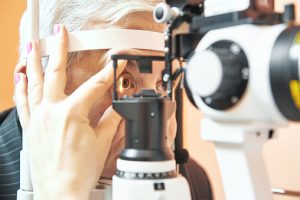 The ability to see is one of the most crucial senses we have, yet millions of people around the world are at risk of losing it. Diseases and complications affecting the eyes can be very intricate, and most people don’t know the signs to identify a potential eye problem. This leads to many people not seeking medical care when they need it. One such disease is glaucoma, and new research has developed a simple test that could solve this irreversible cause of blindness.
The ability to see is one of the most crucial senses we have, yet millions of people around the world are at risk of losing it. Diseases and complications affecting the eyes can be very intricate, and most people don’t know the signs to identify a potential eye problem. This leads to many people not seeking medical care when they need it. One such disease is glaucoma, and new research has developed a simple test that could solve this irreversible cause of blindness.
Glaucoma is a group of conditions that result in damage to the optic nerve—the cranial nerve required for our brains to interpret what we see through our eyes. This damage is primarily caused by increased pressure in the eye itself and is one of the leading causes of blindness in the United States, typically occurring in older adults. While the most common form of this condition has no warning signs, the effects are gradual, with most not noticing any change in vision until it’s too late. Unfortunately, once damage leading to vision loss has occurred, it can’t be recovered. The following are symptoms of the two forms of glaucoma. The ultimate symptom, if left untreated, is blindness.
- Open-angle glaucoma
- Patchy spots are seen in the peripheral or sides of visual fields or central vision
- Tunnel vision in advance stages
- Acute angle-closure glaucoma
- Eye pain
- Blurred vision
- Eye redness
- Severe headache
- Nausea and vomiting
- Halos around lights
Advertisement
Researchers at the University College London (UCL) and Western Eye Hospital have developed a new eye test that allows doctors to see individual nerve cell death in the back of the eye. This would allow early detection of glaucoma in the majority of patients and the start of treatment right away before vision loss occurs. Furthermore, the test also has the potential for early diagnosis of other degenerative neurological conditions, including Parkinson’s, Alzheimer’s, and multiple sclerosis.
“Detecting glaucoma early is vital, as symptoms are not always obvious. Although detection has been improving, most patients have lost a third of vision by the time they are diagnosed. Now, for the first time, we have been able to show individual cell death and detect the earliest signs of glaucoma. While we cannot cure the disease, our test means treatment can start before symptoms begin. In the future, the test could also be used to diagnose other neurodegenerative diseases,” said Professor Francesca Cordeiro at UCL Institute of Ophthalmology, who led the research.
The technique for this new diagnostic test is called DARC—detection of apoptotic retinal cells. It works by using a specially developed fluorescent marker that attaches to cell proteins when injected into patients. Once the marker is adequately circulating the system, a simple eye test is performed, which now displays sick cells highlighted as white fluorescent spots. The most promising aspect of getting this test out to patients is that it utilizes equipment currently used during routine hospital eye examinations, with the hopes that eventually more opticians will perform the test.
“This innovation has the potential to transform lives for those who suffer the loss of sight through glaucoma and offers hope of a breakthrough in early diagnosis of other neurodegenerative diseases. Loss of sight as you age is an incredibly difficult disability, impacting quality of life and independence,” said Bethan Hughes, from Wellcome’s Innovation team.
Related: Is glaucoma hereditary or a genetic disease?
